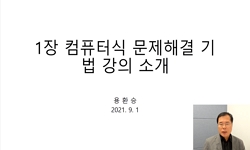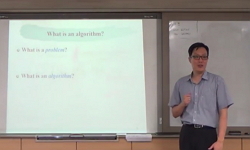Used materials of copper wire, sisalana, electric wire... etc, I had manufactured the work of formative textile arts by knitting technique. After this work , the conclusion that I get is as follows. First, a comprehension of materials is as import...
http://chineseinput.net/에서 pinyin(병음)방식으로 중국어를 변환할 수 있습니다.
변환된 중국어를 복사하여 사용하시면 됩니다.
- 中文 을 입력하시려면 zhongwen을 입력하시고 space를누르시면됩니다.
- 北京 을 입력하시려면 beijing을 입력하시고 space를 누르시면 됩니다.
https://www.riss.kr/link?id=T8956497
- 저자
-
발행사항
[]: 숙명여자대학교, 1997
-
학위논문사항
학위논문(석사) -- 숙명여자대학교 디자인대학원 , 섬유디자인 , 1997
-
발행연도
1997
-
작성언어
한국어
- 주제어
-
KDC
636.000
-
발행국(도시)
대한민국
-
형태사항
iii, 38 p..
- 소장기관
-
0
상세조회 -
0
다운로드
부가정보
다국어 초록 (Multilingual Abstract)
Used materials of copper wire, sisalana, electric wire... etc, I had manufactured the work of formative textile arts by knitting technique.
After this work , the conclusion that I get is as follows.
First, a comprehension of materials is as important as technique. For the harmony of artificial material (copper wire, electric wire) and natural material(sisalana), it have to bring into relief strength after grasping character of materials and complement weakness.
Second, for expression of the color sense of variety, it must have been dyed systematic colors by several stages. After this, for effect of natural gradation using several colors, it have to use sisalanas that are different density followed thickness of needles, But this work is very complex and request some patience.
Third, the weaknesses of knitting technique are an appearance of curl up and character of fraying. But it bring into relief as strength for natural shape and it is possible to correct by mixed with copper wire.
Forth, during keeping, it has some changed of shape by press and this point have to be studied more. The experienced knitting technique getting through a course of formative work of this kind have a possibility of limitless development as a tool of creative expression, getting out of a traditional concept.
A case, accompanied analysis and exploitation of new materials, accompanied creative, new and development-oriented pose and continual investigation, the formative textile arts will be shine.
목차 (Table of Contents)
- 목차
- I. 서론 = 1
- II. Knitting의 역사 = 3
- III. 작품 = 6
- 1. 색상 = 6
- 목차
- I. 서론 = 1
- II. Knitting의 역사 = 3
- III. 작품 = 6
- 1. 색상 = 6
- 1) Brown = 7
- 2) Blue = 8
- 3) Red = 9
- 4) Green = 9
- 5) Yellow = 10
- 2. 재료 = 11
- 1) 동선 = 11
- 2) 사이잘 삼 = 12
- 3) 견사 = 12
- 4) 전기선 = 14
- 3. 작품제작과정 = 14
- 1) 하도제작 = 14
- 2) 사이잘 삼 염색 = 14
- 3) 작품제작 = 16
- ① 니팅하기 = 16
- ② 연결하기 = 17
- ③ 코일링(Coiling) = 17
- ④ 마무리 = 17
- IV. 작품 = 18
- 1) 파도 = 18
- 2) 여름의 길목에서 = 19
- 3) 열망 = 19
- 4) 파랑새 = 20
- 5) 상념 = 20
- 6) 꿈 = 21
- 7) 생동 = 21
- 8) 가을의 길목에서 = 22
- 9) 고이 접어 = 22
- 10) Untitled = 23
- V. 결론 = 24
- 참고문헌 = 26
- 작품사진 = 27
- Abstract = 37












